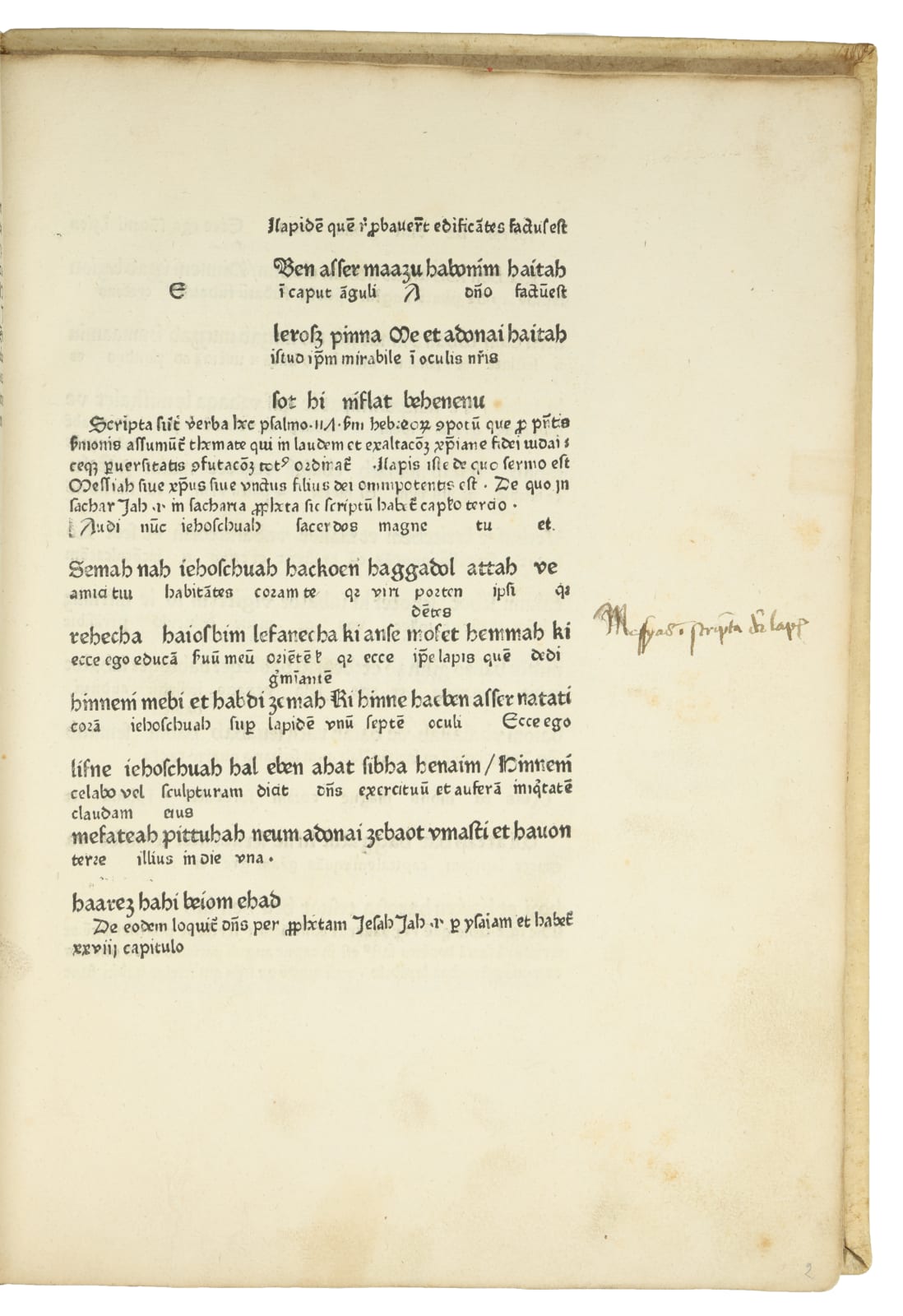

Niger, Petrus (Peter Schwartz)
First edition of the “Treatise against the treacherous Jews”, the most infamous among the earliest anti-Jewish polemics, but also the first Hebrew grammar to appear in Germany and the “the first attempt to use Hebrew characters in a Latin incunabulum” (Gordin, 322). Of the utmost rarity, not seen on the market since 1928.
Folio, (222 × 300 mm). 49 unnumbered ff. (wants first blank: a12-1, b–c10, d12, e6). Single column, 37 lines. With numerous outline woodcut initials, including a large capital E with a tree. Two pages rubricated. Hebrew letters in woodcut. Late 19th century blind-tooled pigskin on five raised bands, attractively blindstamped in the gothic style with floral roll-tools and multiple rules framing a loose semé of fleurs-de-lis. An exceptionally wide-margined copy with temoins, printed on thick paper, slightly spotted or smudged at the beginning and very insignificantly browned at outer edges. Some 80 marginalia in a contemporary German hand, the printed text partly rubricated in red.
Petrus Nigri, a late medieval Dominican friar, dedicated much of his life to missionary work aimed at converting Jews, serving as a scholar, preacher, and polemicist. His sermons and writings attacked what he called Jewish “blindness” and “stubbornness” and included accusations of Jews exploiting Christians through usury and feeling entitled to commit violence against them. He used to deliver his sermons partly in Hebrew and engaged in public disputations with believers of the Jewish faith, having learned the language, and become familiar with its literature during his studies in Salamanca and Montpellier by associating with Jewish children and attending lectures given by rabbis.
The Hebrew characters consist of the Hebrew alphabet and three Hebrew words on fol. 10. These are not printed from movable type, but from a wood block. In no instance during the 15th century was movable Hebrew type employed in non-Hebrew works, even when it might easily have been obtained from Jewish printers.
A single complete copy known in auction records (Sotheby’s, 22 Nov. 1917, lot 3523). A severely defective copy was listed by Sotheby’s two years earlier (21 Dec. 1915, lot 183, wanting 7 leaves), while Maggs, in 1928, offered a large copy on vellum (cat. 509, no. 2084: “This book forms a landmark in the history of Hebrew printing [...] probably the earliest printed anti-Jewish work”).
H 11885*. Goff N-257. GW M27101. Proctor 2463. Hawkins, p. 64. BMC II 514 (very imperfect). ISTC in00257000. Alexander Gordin, “Hebrew Incunabula in the National Library of Israel as a Source for Early Modern Book History in Europe and Beyond”, in: Cristina Dondi (ed.), Printing R-Evolution and Society 1450-1500: Fifty Years that Changed Europe (Venice, 2020: Studi di storia, 13), pp. 321–338.
Provenance: the collection of the German-born publisher and literary agent Felix Guggenheim (1904-76), who emigrated to the California in 1940. On loan to the Los Angeles Jewish Book Month Committee for an exhibition in 1948 (then insured for $1,500).
Join our mailing list
* denotes required fields
We will process the personal data you have supplied in accordance with our privacy policy (available on request). You can unsubscribe or change your preferences at any time by clicking the link in our emails.


